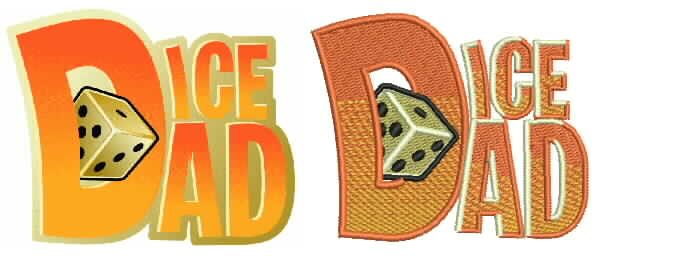Creating a professional gaming embroidery logo involves several key steps to ensure the design is visually appealing, versatile, and suitable for embroidery. Here’s a guideline to help you create a great embroidery logo:
Steps to Design a Professional Gaming Embroidery Logo:
1. Conceptualization:
- Understand the Brand: Comprehend the gaming team’s identity, values, and target audience.
- Gather Inspiration: Look at other gaming logos for inspiration while ensuring originality.
2. Design Elements:
- Iconography: Incorporate gaming-related elements like controllers, consoles, characters, or abstract symbols that represent gaming.
- Typography: Choose a font style that complements the theme—consider bold, futuristic, or pixelated fonts for a gaming vibe.
- Color Palette: Use a balanced and appealing color scheme. Ensure colors contrast well for embroidery.
3. Simplification for Embroidery:
- Simplify Complex Designs: Embroidery works best with simplified designs. Reduce intricate details while retaining the essence of the logo.
- Solid Shapes: Opt for solid shapes and clean lines for better embroidery translation.
4. Software and File Preparation:
- Vector Graphics: Use vector-based software like Adobe Illustrator to create the logo. Vector graphics are scalable without losing quality.
- Export in Suitable Formats: Export the final design in formats compatible with embroidery machines (e.g., EMB, DST, PES, EXP, CND, DSB, JEF, PES, PEC, XXX, ART, HUS, POF, PXF ).
5. Consideration for Stitching:
- Size Consideration: Keep in mind the size variations for the logo—ensure it’s recognizable in both small and large sizes.
- Thread Selection: Choose thread colors that match the logo design for accuracy in embroidery.
6. Testing:
- Sample Stitch-Outs: Before finalizing, create a few test stitch-outs to check how the design translates into embroidery.
7. Professional Assistance:
- Embroidery Specialist: If new to embroidery particulars, counsel an embroidery subject matter expert or a visual creator experienced in embroidery to enhance the sewing plan.
8. Legal Considerations:
- Copyrights and Trademarks: Ensure the logo design doesn’t infringe on existing copyrights or trademarks.
9. Feedback and Iteration:
- Feedback Loop: Seek opinions from the gaming team and others for feedback on the design. Make necessary adjustments based on the input.
10. Finalization:
- Approve the Design: Once satisfied with the design and embroidery tests, finalize the logo for production.
Remember, a professional gaming embroidery logo should reflect the gaming team’s identity while being adaptable to different sizes and embroidery techniques.

